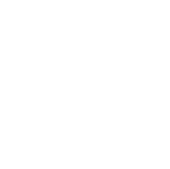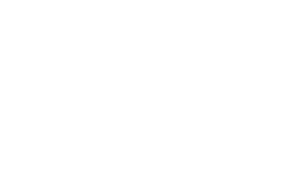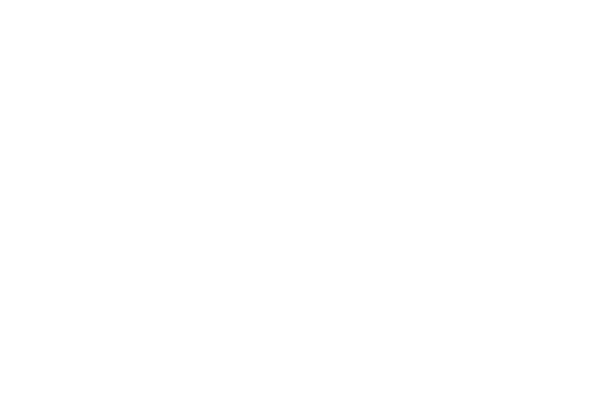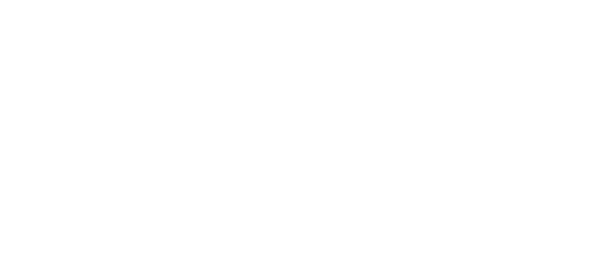 |
 |
 |

|
Markthal by night
®Provast, MVRDV; foto Ossip van Duivenbode
MVRDV
Year: 2004-2014
Location : Rotterdam, The Netherlands
Client : Provast Nederland bv, The Hague, Netherlands
Program : 100.000m2, 228 Apartments, 100 fresh market produce stalls, food related retail units, preparation and cooling space, supermarket, 1.200 parking spaces.
Budget : EUR 175 Million
Live video streem of the construction site is also available online at:
http://markthalrotterdam.nl/en/webcam-2/
Competition Phase:
Winy Maas, Jacob van Rijs and Nathalie de Vries
Marc Joubert, Anet Schurink, Jeroen Zuidgeest and Michele Olcese, Laura Grillo, Ivo van Capelleveen
Design Phase:
Winy Maas, Jacob van Rijs and Nathalie de Vries
Renske van der Stoep, Anton Wubben, Laura Grillo, Joeri Horstink, Marc Joubert, Diana Lopez , Gijs Rikken, Elsbeth Ronner, Anet Schurink, Yvo Thijssen, Johnny Tsang, Sven Thorissen, Jeroen Zuidgeest
Partners:
Co-architect: INBO, Netherlands
Structure: D3BN/ DHV, The Hague, Netherlands: Maurice Hermens
Services: Peutz & Associes Zoetermeer, Netherlands: Peter Wapenaar
Acoustics: Peutz & Associes Zoetermeer, Netherlands: Peter Wapenaar
Services: Techniplan, Netherlands
|
|
 |
ROTTERDAM MARKTHAL
Rotterdam Markhal opened October 1, 2014: a mix of housing and markt
|

|
Posted 3 October 2014
|
Share this:
|
|
"To my knowledge it is the largest glass façade in the world." Hans Schröder, partner Provast
The building with a total surface of 95.000 m² was designed by Rotterdam based architecture and urban planning firm MVRDV. The arch-shaped hall has a height of 40 meters, inside the arch 228 apartments are situated. The ground floor has a length of about 120 meters and a width of 70 meters, the size of a large football pitch. The underground car park has a total of 1.200 parking lots. Markthal is an energy efficient building and has been awarded a BREEAM Very Good rating.
|
|
|
|
|

|

|

|

Opening by Queen Máxima of the Netherlands
Photo: Fred Ernst
|
|
October 1, 2014 Queen Máxima of the Netherlands opens Markthal Rotterdam, a project by developer Provast. Markthal is the first covered food market of the Netherlands, drawing inspiration from food markets in Stockholm, Barcelona and Valencia. The roof of the market hall is an arch accommodating 228 apartments, underneath the hall are 1,200 parking spaces and a supermarket. The combination of market hall and housing is a new typology and, located in Rotterdam’s city center, is expected to attract 4,5 to 7 million visitors each year. The construction of Markthal, a design by MVRDV, took five years to be completed. The project was executed by contractors J.P van Eesteren, Mobilis and Martens en Van Oord.
|
|
|
|
|
|
|
New laws in the Netherlands require covered areas for traditional open air meat and fish markets due to new hygienic constraints. MVRDV posed the questions 'can we use this operation to evolve the market typology as well as densify the the city centre?' and 'Can we increase quality as well as density of programming?'
The Market Hall is part of the new inner city heart of the Laurens Quarter, the pre-war centre of Rotterdam. The buildingis a sustainable combination of food, leisure, living and parking, all fully integrated to enhance and make the most of the synergetic possibilities of the different functions. The hall is formed from an arch of privately developed apartments, strategically allowing private investment and iniative to provide a public space. The result is a covered square which acts as a central market hall during the day and, after closing hours remains lively due to restaurants on its first floor.
|
|
|
|

®Provast, MVRDV; foto Ossip van Duivenbode
|
|
|
|
|
|
|
In order to attract a large number of visitors, the building is designed with an open character. The open sides had to be closed to prevent rain and cold from entering, but kept as transparent as possible by opting for a single glazed cable net façade. Comparable to a tennis racket, pre-stressed steel cables create a suspended net in-between which the glass panes are hung. Markthal’s cable net façade is the largest of its kind in Europe and flexible to withstand heavy storms.
The exterior facade is clad in grey natural stone; the same is used for the market floor and the surrounding public space, in this way the emphasis lays
Rotterdam has a new icon: Markthal Rotterdam. At a historical location at the Binnenrotte, next to Blaak Station and the largest weekly open air fresh food and hardware market in Rotterdam, the first covered market of the Netherlands was realised. Markthal includes a huge market floor on the ground floor under an arch of apartments. Its shape, its colourful interior and the height turns Markthal into an unique spectacle. Unique is not only its shape and size, but especially the way the different functions are combined. The combination of an apartment building covering a fresh food market with food shops, restaurants, a supermarket and an underground parking is found nowhere else in the world.
|
|
|
|
Location
Urban transformation
Markthal was a success already before being realised: it is a new and fresh icon which already has attracted large quantities of international press and visitors. The centrally located building is rooted in the city’s history, located parallel to the late medieval ‘Laurenskerk’ (Laurens church) and at the location of the former dike along the river Rotte. This river was diverted at the end of the 19th century in favour of a train line viaduct leading to the south bank of the river Maas. In the 1990’s this trajectory was rebuilt as an underground tunnel and the current oblong square emerged which offers room for the open air fresh food market twice a week. The 1950’s buildings on either side of the old highline suddenly faced the new square with their backsides and have been replaced ever since.
Markthal means an important impulse to its surrounding area which is a strong contribution to the urban economy. Markthal with its daily fresh food market, shops and apartments, creates coherence and connections in the neighbourhood which will reach a new centrality. After completion of Markthal, the city of Rotterdam will start to refurbish Binnenrotte Square to make it more attractive also on days that there is no outdoor market. After the refurbishment the outdoor market will be reconfigured, the market lanes will connect seamlessly to the entrances of Markthal, to allow the public to easily enter and exit the building and to create incentives between the two markets, indoor and outdoor.
|
|
|
|
The building is a new statement in the urban structure of Rotterdam with its high diversity of icons from the days of reconstruction and urban renewal, but also some new buildings that have been realised over the last years. It is in line with the city’s ambition to house more people in the centre and to raise the life quality in post-industrial Rotterdam through a series of large scale projects and countless bottom-up projects. The combination of styles of architecture forms an excellent environment for the spectacular design of Markthal.
Accessibility
Markthal is accessible by all means of transport. Blaak train station is right in front of the building and serves also as metro, bus and tram hub. In 2015 the city of Rotterdam will construct a recessed bicycle parking right next to Markthal with space for 800 bikes. Next to this excellent accessibility by public transport Markthal is also easy accessible by car. The four underground parking levels offer 1.200 parking places. As part of the general transformation of the ‘Laurenskwartier’ (Laurens quarter) neighbourhood these parking places are not only available to inhabitants but also open to visitors of Markthal, the library, the outside market and tourist attractions in the area. A new traffic plan in the vicinity of the car park entrance will avoid queues, Markthal parking will be open 24/7.
Parking Markthal
The 1.200 parking places are an important addition to the capacity of ‘Laurenskwartier’ (Laurens quarter) neighbourhood and part of the urban transformation. The underground car park is open 24/7 and equipped with latest technology such as a parking guidance system, licence plate recognition, online reservation system and charging points for electric vehicles. Visitors of Markthal, the library, the outdoor market or the city of Rotterdam can park here - as well as the inhabitants of Markthal.
These innovative technologies are geared towards a more sustainable parking: the sophisticated parking guidance system and the license plate recognition help avoid unnecessary driving inside the garage whilst the online booking system is a customer service intervention avoiding traffic in the neighbourhood.
|
|
|
|
In the 16th century the population of Rotterdam grew rapidly. On the site of Markthal was a densely populated neighbourhood with residential buildings and herring fishing companies which were since the 17th century gradually replaced by inn’s, shops and office buildings. During the bombardment in May 1940 all historic urban fabric was destroyed. After the war a school was built on the site which was demolished for the construction of Markthal. The school moved into an empty office building at the western façade of Markthal, from their class rooms and the roof top playground the pupils have great vistas through the entire length of Markthal. The research by BOOR was executed under great public interest and shows in great detail how a thousand years ago, at the site of Markthal, pioneers started to cultivate the land and made a living.
De Tijdtrap (The Time Stair): Middle Ages underneath the Markthal
De Tijdtrap is a lasting memoir of the archaeological research conducted at the Markthal site. It presents the history of Rotterdam in a vertical exhibition alongside the escalator in the centre of Markthal which connects the hall to the four underground levels. The deeper the escalator goes, the more in depth the history of Rotterdam is presented in a number of displays with findings and models, accompanied by sound and images. Together they tell the story of the beginning of Rotterdam and its history of food.
|
|
|
|

®Provast, MVRDV; foto Ossip van Duivenbode
|
|
|
|
|
|
|
Architecture
In October 2004 the team of Provast developers and architecture studio MVRDV won a competition organised by the city of Rotterdam for the design and construction of a market hall at Binnenrotte. The municipality wanted to extend the existing open air market with a covered addition. According to stricter European rules in the future the open air sale of fresh and chilled food would not be permitted anymore. Next to this the municipality wanted to augment the amount of inhabitants in the city centre in order to create more capacity for the services in the area. The demanded programme – housing, parking and a market hall – asked for an obvious solution: two residential slabs with an economically constructible market hall in between. Provast and MVRDV had seen in the South of Europe that these kind of market halls are often dark, introverted buildings with little connection to the surrounding urban area. The Markthal in Rotterdam however was to be an important impulse in the development of the ‘Laurenskwartier’ (Laurens quarter) neighbourhood and had to strengthen the Eastern side of the city centre. A highly public, open building with good accessibility was needed. The team decided to just flip the two slabs and market which led to a larger hall with two wide openings towards the city. In order to make the construction more efficient a curve was chosen that fitted a traditional elevator core. By adding some space to the lower floors for extra retail space the current volume of the arch emerged 120 meters long, 70 meters wide and 40 meters tall.
The building needed to be as open as possible to attract the public and at the same time it had to be closed off due to weather conditions. Keeping the closure as transparent as possible a cable net façade was chosen which needs very few constructive elements. Its principle is comparable to a tennis racket in which the steel cable are used as strings in between which the glass is mounted. This cable net façade is the largest of its kind in Europe. Because of this miracle of engineering the art piece inside is visible from the outside, its lush shapes and colours invite the public to enter the building. The exterior of the Markthal is executed in grey natural stone, the same as on the pavements, to put the emphasis onto the interior.
Markthal is a building without a backside. All sides of the building are accessible or shop windows. The entire supply for the hall, the shops and restaurants is therefore located underground. The first basement floor features an expedition court to which the delivery can happen with vans, from this exhibition court freight elevators reach the market hall. In this way inhabitants are not hindered by distribution activities that often occur in the early hours of the morning. Also in the basement is an Albert Heijn supermarket, Etos and Gall & Gall. The delivery for these stores is organised through an underground tunnel leading to hidden elevators at Binnenrotte square, in this way larger lorries can operate in distance to the hall. Inhabitants have storage rooms and shared bicycle rooms in the basement.
Inhabitants can reach their apartments through six separate entrances leading to elevators and double helix flight stairs. Due to the curve of the structure the elevator hall is gradually - floor by floor – changing in size and location. At the ground floor the elevator is located at the inner façade, at the top floor towards the outer façade. Each elevator hall services a maximum of four apartments, two of which have windows to the market and all have large glass fronts towards the outside.
|
|
|
|
Construction
Construction was started October 1st 2009 by contractor combination Mobilis and Martens en Van Oord. Before this the school and parking garage which occupied the site before had been demolished. The school was relocated by Provast into a 1960’s office building right next to Markthal. On its roof is the school playground, kids have fantastic views into the length of Markthal.
Markthal is located at a historical location: the old dike along the river Rotte which was diverted at the end of the 19th century. The soil however is still extremely unstable and wet. To prevent a collapse of the construction site during excavation sheet piles were placed around the entire perimeter of the site. To provide a solid basis for laying the foundations 2500 heavy concrete piles were hammered into the wet soil. Containers were placed along the site as sound barrier.
One of the many specialties during Markthal’s construction was the great depth of the construction site, 15 meters. Groundwater ran already at a depth of 3 meters below street level. As the cofferdam was not supposed to float up during construction the concrete piles were used in this phase as tension piles to keep the site stable. On July, 1 2010 the pile works were completed and a concrete grid was constructed: this was at the same time the future floor structure of the first basement and a protection for the construction site, a smart combination.
Now that the walls were secured, pumps were brought in and made it possible to excavate the site until a depth of 8 meters. This gave the archaeologists space to research the remains of the first settlement of Rotterdam dated 1270. In order to be able to execute the works until the depth of 15 meters below the pavement and to not pressure the walls and floors the site was then filled with water. One can compare this to a bucket which is lowered down into water, this is difficult if the bucket is empty and easy if the bucket is filled with water. Cranes on floating platforms dug the site up assisted by GPS technology to avoid the concrete construction to be damaged. The last meters were dug out with a sludge piston which was designed especially for Markthal in a way to avoid touching the piles.
In summer 2011 the divers started to lay the reinforcements for the concrete floor 15 meters under water, this was done in heavy duty diving suits, on touch, without any view in the murky water. The concreting took 72 hours. Day and night a 1,5 meter thick layer of underwater concrete was laid, 1500 lorry loads. December 2011 the site was slowly pumped dry, the floor which had to carry a weight of 12.000 kilo per m² appeared watertight. From this moment on, the site was dry and it took another year to complete the underground car park. Then the specialist work was done and contractors changed.
Construction company J.P. van Eesteren started on 1st of October 2012 with the construction of the arch. The construction of the two sides was done fast and economical by means of tunnel shuttering, which worked from the second to the tenth floor. The roof of the arch was realised in four parts supported by a temporary driving construction underneath, a so called Super Support Construction (in Dutch SOC). Inside the concrete, small Wi-Fi-devices indicated whether the concrete was hardening according to plan.
The steel cables of the cable net façade bear a tension of 25.000 to 30.000 kilo, the equivalent of 27 VW Golf cars. Because of this high tension, the cables have grown 9 to 15 cm. The façade is flexible and during heavy storms the wind can push the centre of the façade 70cm inwards, which will make the cables another 4cm longer. In summer 2014 Markthal was closed off by the façade and the construction of the fresh units and stores inside the hall started. For the construction of the market stalls 3 tons of steel was used. At the end of construction but well before the completion date, the Markthal construction site had already attracted 12.000 visitors.
Sustainability
Markthal received a BREEAM Very Good certificate. The building is connected to city heating and a thermal storage system underneath the building which will also heat and cool a number of adjacent buildings in the surrounding area. The various functions in the building can exchange heat and cold. For the hall itself extensive research was conducted to create a comfortable interior climate with an extremely low energy use. The hall is naturally ventilated, underneath the glass façade fresh air flows in, it rises towards the roof and leaves the hall through ventilation shafts in the roof. This is a thermic system which can function without any installations. A central monitoring system is used to exchange heat and cool between the different programmes, in this way less installations could be used than normal for these programmes. The combination of housing, shopping centre, parking and market hall makes the installation technology more efficient. Inside the market, an information panel illustrates the energy use and CO2 savings of the building. A smart sanitation system is designed to save water.
The design vision of MVRDV describes Markthal as urbanism, the function mix is an integrated design, a 24 hour building which is a public and lasting addition to the city of Rotterdam.
The tenants of Markthal have signed a so called Green Lease Agreement regarding sustainable performance requirements. This covers the use of water, energy, waste and the use of healthy construction material. In this way the sustainable ambition reaches further than just the cask of the building.
An ecologist was invited to improve the ecological value of the inner city location and advised to create space for bats and swifts. On the western façade of the 11th floor are four large bat stays integrated into the façade, on the northern side of the first floor are ten nests for swifts mounted to the wall.
|
|
|
|
Horn of Plenty is one of the largest art pieces of the Netherlands. Its technology is unique, the fresh produce seems photographed but is built in the computer, piece by piece. The 3D impression is detailed in the same resolution suitable for a glossy magazine. In total the image consist of 400.000 megapixels. 1.470 gigabyte have been sent to the printer, in parts, as one computer could never open such a large file.
The 11.000 m² art work have been screwed against the wooden interior facade of the hall in which must have been the largest puzzle of Europe. Each of the 4.500 aluminium panels sized 152 cm by 152 cm needed to be mounted in the right way at the right spot. The 2 mm thick panels are perforated in order to absorb noise from the hall, this helps to create the excellent acoustic profile of the halls interior.
One piece in the centre of the art work is left white; here throughout the entire year an animation will be projected in the evening, this ‘video-mapping’ will change and respond to themes such as season and food.
|
|
|
|
Food
The entire fresh world underneath one roof
Variety and diversity is key for the market. The market stalls inside the hall and the surrounding restaurants and food stores offer a large variety of kitchens, styles, produce and price levels. The market floor itself has 96 fresh units. The units are arranged back to back and have an average surface of 20 m² and an average front of 9 meters. The units could be rented per piece or per series. Storage rooms, cooling units and preparation rooms for the units are located on the -1 level. Some units have a glass roof, others have a roof terrace, especially shops with a restaurant or catering service have rented these units and offer their clients the chance to eat and drink with a great view of Markthal. Roofs of other units will be used for urban farming, for growing herbs or vegetables which is not only pretty but useful, the plants have an acoustic function. A number of units is reserved for pop-up functions and will be used for seasonal products, for example asparagus or herring. On the ground floor and the first floor are about 20 shops and restaurants. All shops are related to food. On level -1 a large anchor store is located, Dutch supermarket Albert Heijn offers consumers the possibility to do all shopping underneath one roof. The fresh market is open daily. Monday till Saturday from 10:00h and 20:00h and Sunday from 12:00h and 18:00h. The restaurants are open longer and all have direct street access.
De Wereld van Smaak - The World of Taste
The edutainment centre ‘De Wereld van Smaak’ gives meaning to food, a story to fresh produce and room for discoveries, experiences and education. The latest trends and developments in food are given a stage. Producers have the chance to get feedback from consumers. ‘De Wereld van Smaak’ is a space that can be adjusted into a living lab, cooking school, presentation room or stage. The multifunctional space will be a meeting place for chefs, hobby chefs, dieticians, kids, senior citizens, passers-by and the entire food business.
‘De Wereld van Smaak’ is an independent cooperative in which a number of commercial parties take part. It inspires and stimulates everyone to make an educated choice for fresh food. It is an interactive platform offering space to all fresh food sectors such as vegetable and food, meat, fish, bread, pastry, dairy, herbs and spices and all related business. They will share their knowledge with each other and the visitors.
|
|
|
|
|
|
|


